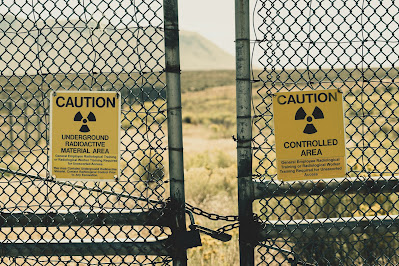Featured
- Get link
- X
- Other Apps
The Psychology of Prejudice and Discrimination
July 2023
The Psychology of Prejudice and Discrimination
Prejudice and discrimination are complex psychological phenomena that have significant impacts on individuals and society as a whole. Prejudice refers to preconceived opinions or attitudes towards a particular group of people based on their perceived characteristics, such as race, gender, age, or sexual orientation. Discrimination, on the other hand, involves the unfair or prejudicial treatment of individuals or groups based on these characteristics. In this article, we will explore the psychology behind prejudice and discrimination, their effects, and strategies to address and reduce them.
## The Nature of Prejudice
Prejudice is often rooted in stereotypes, which are generalized beliefs or assumptions about a particular group. Stereotypes can be based on real or imagined differences between groups and are often perpetuated through socialization, media, and cultural norms. These stereotypes can lead to biases, which are automatic and unconscious mental processes that influence our perceptions, judgments, and behaviors towards others.
### Cognitive Processes
Cognitive processes play a crucial role in the formation and maintenance of prejudice. One such process is categorization, where individuals mentally organize people into groups based on certain characteristics. This categorization can lead to the formation of in-group and out-group biases. In-group bias refers to the tendency to favor members of one's own group, while out-group bias involves negative attitudes and behaviors towards members of other groups.
Another cognitive process that contributes to prejudice is confirmation bias. This bias involves seeking out information that confirms our existing beliefs and disregarding or downplaying information that contradicts them. Confirmation bias can reinforce stereotypes and perpetuate prejudice.
### Emotional Factors
Emotions also play a significant role in prejudice. Negative emotions, such as fear, anger, and disgust, can contribute to the development and maintenance of prejudice. These emotions may arise from a perceived threat to one's own group or from cultural and societal influences.
### Social Factors
Social factors, such as social norms and intergroup contact, can influence the development of prejudice. Social norms are unwritten rules and expectations within a society that shape individuals' attitudes and behaviors. If prejudiced attitudes are prevalent within a social group, individuals may conform to these norms and adopt similar prejudices.
Intergroup contact theory suggests that increased contact between members of different groups can reduce prejudice. When individuals have positive interactions with members of other groups, it can challenge stereotypes and promote empathy and understanding.
## The Effects of Prejudice and Discrimination
Prejudice and discrimination have detrimental effects on individuals and society. They can lead to social exclusion, inequality, and the perpetuation of stereotypes. Individuals who experience prejudice and discrimination may suffer from psychological distress, low self-esteem, and reduced well-being. These negative effects can also extend to physical health, as discrimination has been linked to increased stress and health disparities.
Furthermore, prejudice and discrimination can create a hostile and divisive social environment. They can hinder social cohesion, impede cooperation, and contribute to social inequalities. Addressing prejudice and discrimination is essential for fostering inclusivity, equality, and social harmony.
## Strategies to Address and Reduce Prejudice and Discrimination
Addressing prejudice and discrimination requires a multi-faceted approach that involves individuals, communities, and institutions. Here are some strategies that can be effective in reducing prejudice and discrimination:
1. **Education and Awareness**: Promoting education and awareness about the harmful effects of prejudice and discrimination can help challenge stereotypes and promote empathy. This can be done through school curricula, diversity training programs, and public awareness campaigns.
2. **Intergroup Contact**: Encouraging positive interactions and contact between members of different groups can help break down barriers and reduce prejudice. This can be facilitated through community events, collaborative projects, and diversity initiatives.
3. **Legislation and Policies**: Implementing and enforcing anti-discrimination laws and policies can provide legal protection and promote equality. These laws can address issues such as employment discrimination, housing discrimination, and hate crimes.
4. **Promoting Inclusivity**: Creating inclusive environments that value diversity and promote equal opportunities can help reduce prejudice and discrimination. This can be achieved through inclusive hiring practices, diverse representation in media and leadership positions, and fostering a culture of respect and acceptance.
5. **Empathy and Perspective-Taking**: Encouraging empathy and perspective-taking can help individuals understand and appreciate the experiences of others. This can be facilitated through storytelling, empathy-building exercises, and promoting empathy in interpersonal interactions.
6. **Community Engagement**: Engaging communities in dialogue and collaborative efforts can foster understanding, build relationships, and promote social cohesion. This can involve community forums, intergroup dialogues, and community-led initiatives.
It is important to note that addressing prejudice and discrimination is an ongoing process that requires continuous effort and commitment. By understanding the psychology behind prejudice and discrimination and implementing strategies to address them, we can work towards creating a more inclusive and equitable society.
In conclusion, prejudice and discrimination are complex psychological phenomena that have significant impacts on individuals and society. They are rooted in cognitive, emotional, and social processes and can lead to harmful effects on individuals' well-being and social cohesion. By implementing strategies such as education, intergroup contact, legislation, and promoting inclusivity, we can work towards reducing prejudice and discrimination and fostering a more inclusive and equitable society.
Citations:
[1] https://www.ncbi.nlm.nih.gov/pmc/articles/PMC2915460/
[2] https://www.apa.org/topics/racism-bias-discrimination
[3] https://www.apa.org/topics/racism-bias-discrimination/types-stress
[4] https://www.annualreviews.org/doi/10.1146/annurev-psych-080520-102803
[5] https://www.annualreviews.org/doi/10.1146/annurev-psych-010213-115115
[6] https://www.equalityhumanrights.com/sites/default/files/research-report-56-processes-of-prejudice-theory-evidence-and-intervention.pdf
Comments
Popular Posts

Why are Memories Forgotten?
- Get link
- X
- Other Apps

How is the Colour of a Lobster Determined?
- Get link
- X
- Other Apps

Can Sound Waves Solve Plastic Pollution?
- Get link
- X
- Other Apps

Can Animals Recognise Human Faces?
- Get link
- X
- Other Apps

Do plants sleep? The surprising science of sleep in the plant kingdom
- Get link
- X
- Other Apps

Is the Earth Spinning Faster?
- Get link
- X
- Other Apps

Can Bad Times Actually Improve Your Life? Surprising Benefits of Adversity
- Get link
- X
- Other Apps

Can Brain Implants Make You More Powerful?
- Get link
- X
- Other Apps

The Future and Potential of Nuclear Batteries
- Get link
- X
- Other Apps

Music and its impact on Studying
- Get link
- X
- Other Apps
Popular Posts

Why are Memories Forgotten?
- Get link
- X
- Other Apps

How is the Colour of a Lobster Determined?
- Get link
- X
- Other Apps

Can Sound Waves Solve Plastic Pollution?
- Get link
- X
- Other Apps

Can Animals Recognise Human Faces?
- Get link
- X
- Other Apps

yo my grade flipped from a f to A+
ReplyDeleteso good
ReplyDelete